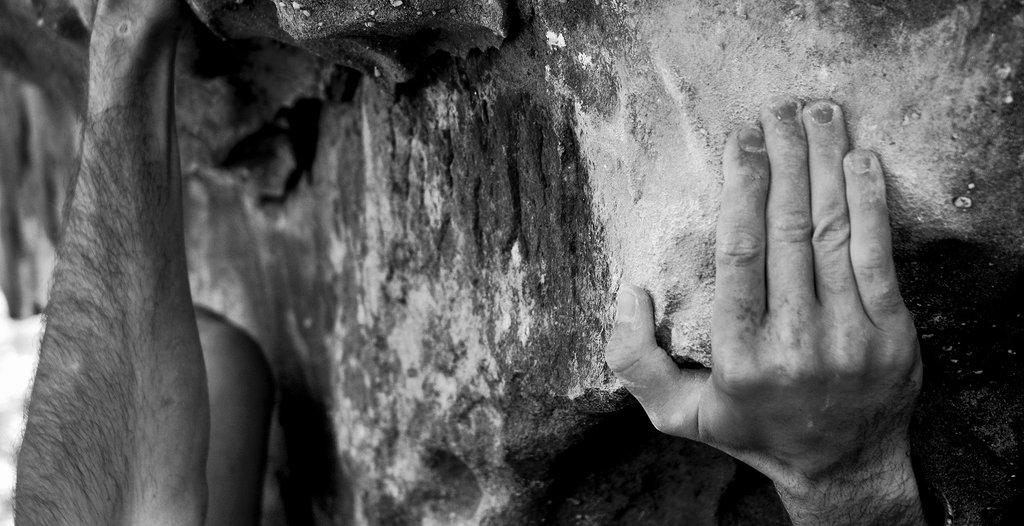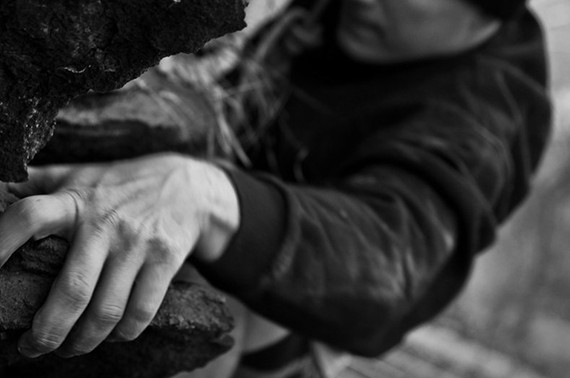Photo: Joshua Kruger
Not all of us can boast brute strength or an impeccable ape index. So to make our way up the climbs that inspire us—we need to get creative with impeccable technique. We’re personally big fans of the beached whale, throw-yourself-over-the-ledge approach to sketchy top outs in times of desperation, however, we found the beta on a few useful, but unconventional approaches to grabbing holds in times when pulling down just isn’t enough.
Here are 5 unique techniques to throw into your “ninja grab bag” from Matt Samet’s Crag Survival Handbook:
1. The wrist pull
If you have only one good handhold but need to generate two-handed momentum, grab your engaged arm around your wrist with your free hand, pulling on the wrist as if it were a handhold. This movement imparts a minor hydraulic boost.
2. The false grip
For big, beefy, cross-body reaches off horns or buckets, place your hand in an undercling position, and then rotate it inward 90 degrees, back toward you; hook your palm and fingers over the horn, and “beast a lever” to your target hold.
3. The thumbdercling
To stand into scoops, bowls, or depressions, or to stabilize on slabby terrain, engage an undercling with your thumb pressing up against a small downward-pointing overlap in opposition to your feet.
4. The fishhook
To use your thumb as if it were a finger, floss it into a pocket, seam, or fissure and curl or cam it; also permits you to place your fingers outside the thumbhole on deformities in the rock.
5. The slimp-to-crimp
When you go hard and high for a crimp, you can’t always close the grip. Try to grab the crimper as you would a sloper (in the sloping-crimp position), and then turn on the crimp as you bring your feet up or catch a helper hold with your other hand.
While solid strength and extra length help greatly in climbing, creativity in how you adapt through technique can catch anyone up. Try these moves out next time you’re on the rock or at the gym and let us know how it goes!
Free eBook: 7 Mistakes to Avoid as a New Climber

Photo: Ashton Martin








